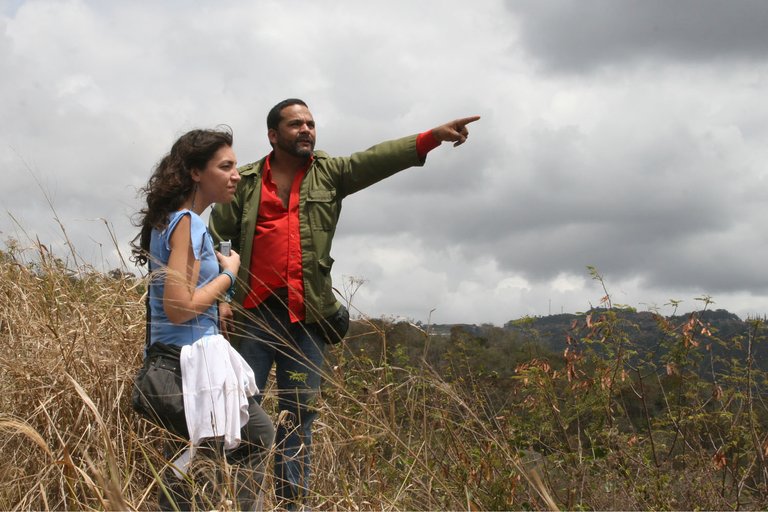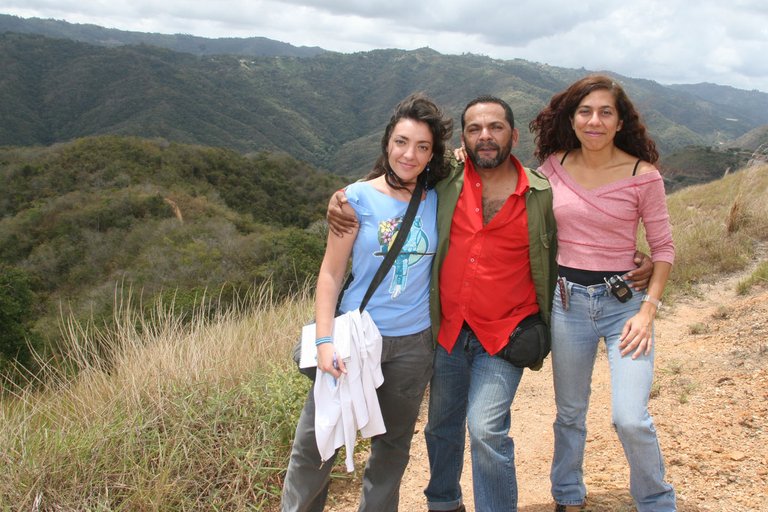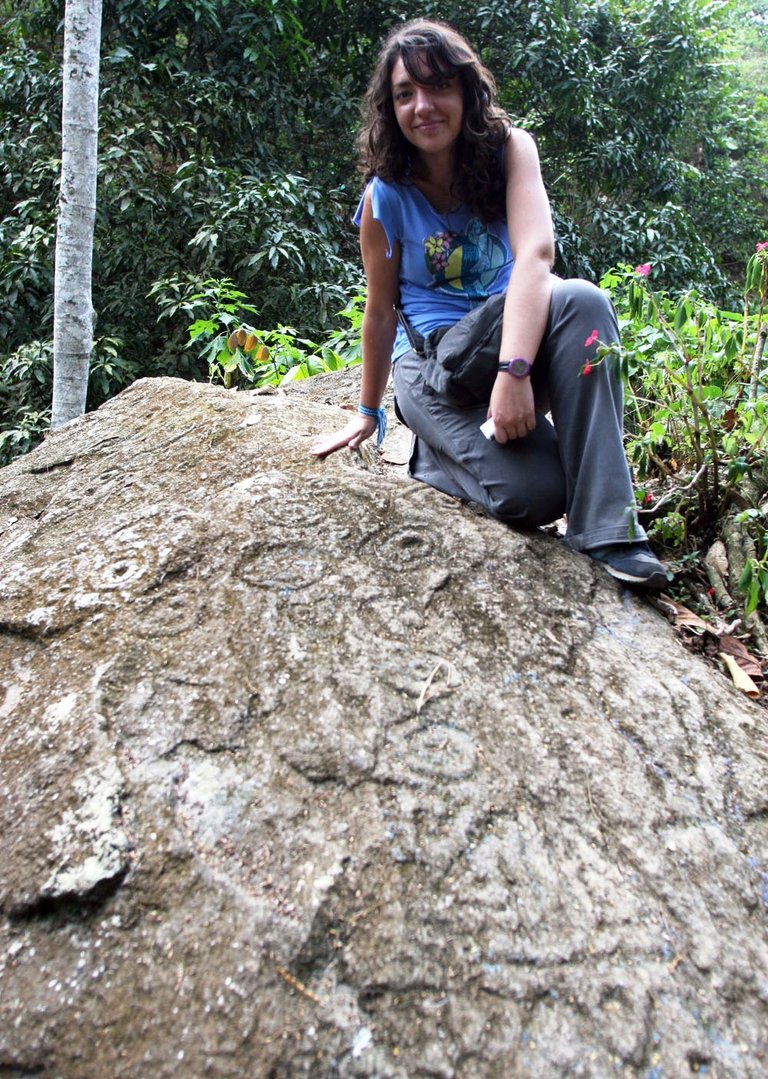The petroglyphs of El Hatillo, Miranda - Venezuela / Los petroglifos de El Hatillo, Miranda - Venezuela
Although there are many in various parts of the country, seeing petroglyphs is one of the things I have done the least during my travels in Venezuela, I have only seen some in the Amazonas state, others in Aragua near Las Cocuizas park, and the one I show you in this publication, located in the town of El Hatillo, Miranda state.
A pesar de que hay muchos en varias partes del país, conocer petroglifos es una de las cosas que menos he hecho durante mis viajes por Venezuela, sólo he visto algunos en el estado Amazonas, otros en Aragua cerca del parque Las Cocuizas, y el que les muestro en esta publicación, ubicado en el pueblo de El Hatillo, estado Miranda.

I found these few photos a few days ago and it seemed appropriate to leave this information about them here on my blog, since it is not a very well known or well publicized place. In fact, when I went several years ago, it was for work, to do a report because there was a tourism project that the mayor's office and the community were promoting to rescue this heritage and protect it.
Encontré estas pocas fotos hace unos días y me pareció oportuno dejar esta información sobre ellos aquí en mi blog, ya que no es un lugar ni muy conocido ni muy difundido. De hecho, cuando fui hace varios años, fue por trabajo, para hacer un reportaje porque había un proyecto turístico que la alcaldía y la comunidad estaban impulsando para rescatar este patrimonio y protegerlo.

These are the petroglyphs found on the margins of the Tusmare Ravine, a place that was formerly inhabited by the Mariche Indians. In the years 1945-1947, the anthropologist and archaeologist José María Cruxent and the chronicler José Félix Peraza, ventured on an expedition where they found several petroglyphs in the area, about 47, although today only five have been located, surely many were lost with the growth of the population and the constructions in the area.
Se trata de los petroglifos que se encuentran en los márgenes de la Quebrada de Tusmare, lugar que era habitado antiguamente por los indígenas Mariche. Por los años 1945-1947, el antropólogo y arqueólogo José María Cruxent y el cronista José Félix Peraza, se aventuraron en una expedición donde dieron con varios petroglifos en el área, unos 47, aunque hoy en día apenas se han podido ubicar cinco, seguramente muchos se perdieron con el crecimiento de la población y las construcciones en la zona.

It is believed that these rock engravings date from before the Spanish colonization and the meaning of the representations: human, geometric and animal figures, is uncertain, although the worldview of indigenous tribes such as the Mariches or Caribes, used to relate, for example, the snakes and the eternal return, that of dying and being born again, as explained to me the anthropologist who accompanied me in this report. I would have liked to have captured more photos, but at that time the interviews were my priority 😉, I hope you found this brief review interesting.
Se cree que estos grabados en rocas datan de antes de la colonización española y sobre el significado de las representaciones: figuras humanas, geométricas y animales, es incierto, aunque la cosmovisión de las tribus indígenas como los Mariches o Caribes, solían por ejemplo, relacionar a las culebras y el eterno retorno, eso de morir y volver a nacer, según me explicó la antropóloga que me acompañó en este reportaje. Me hubiese gustado haber capturado más fotos, pero en ese momento las entrevistas eran mi prioridad 😉, espero les haya parecido interesante esta breve reseña.
All photos are my property / Todas las fotos son de mi propiedad
Congratulations, your post has been added to Pinmapple! 🎉🥳🍍
Did you know you have your own profile map?
And every post has their own map too!
Want to have your post on the map too?
Muy interesante lo que escribes de los petroglifos y las figuras grabadas en la roca
¡Muchas gracias @lileisabel! 🤗
Interesante! No conocía de esos petroglifos, siempre son un enigma, lástima que solo queden 5. Saludos!
Sí, lamentablemente es un patrimonio poco valorado, gracias por pasar, ¡saludos!
Este si es un contenido muy interesante, pues estos petroglifos son demasiado antiguos, leí un reporte de ellos en los años 90 en la revista Kabala..
Antes de ir, yo no sabía nada de ellos, es una lástima que a pesar de que fueron documentados en los años '40, no los protegieron debidamente y al parecer muchos ya no existen, además, poca gente sabe de ellos. Como dicen: lo que no se conoce, no se valora...
Pero ellos si forman parte de nuestro patrimonio y lo hicieron los primeros pobladores de nuestra hermosa nación cuántos años tendrán 2.000 o tal vez 3.000
Así es, son importantes. Según me dijeron, los expertos no han podido determinar su edad, pero creen que son anteriores a la colonización española.